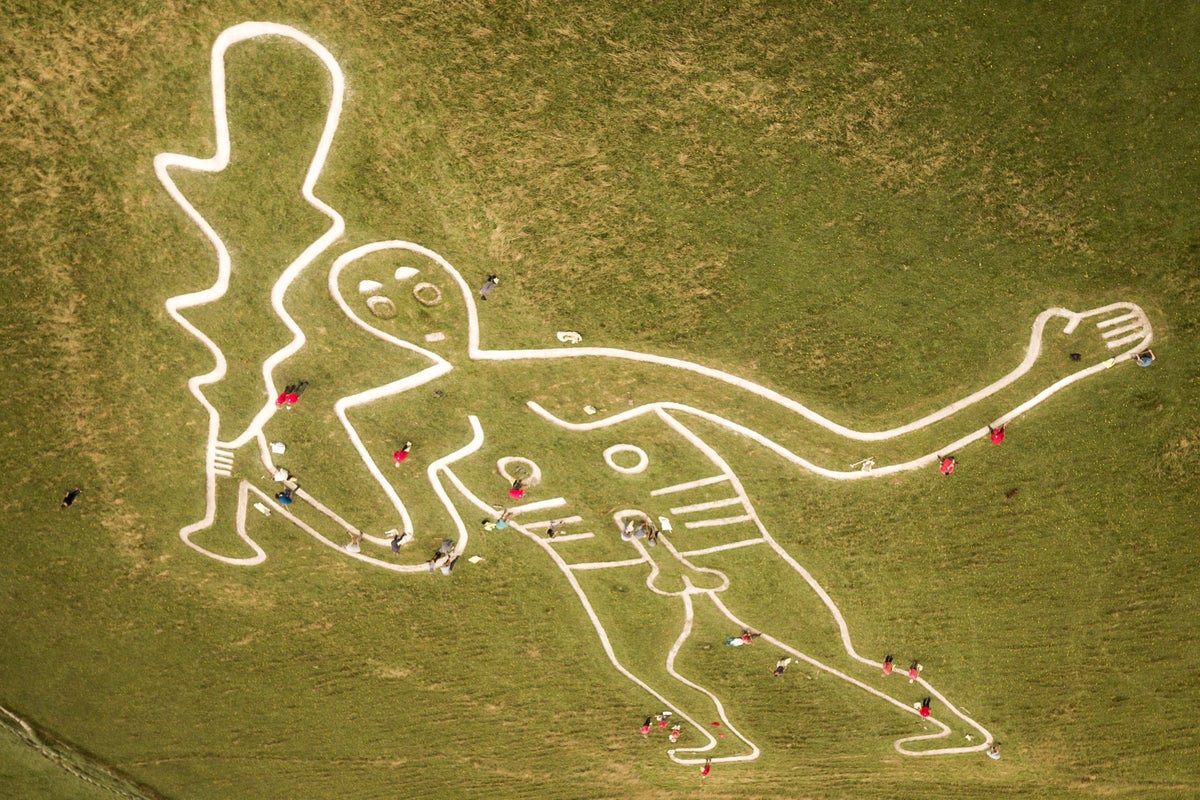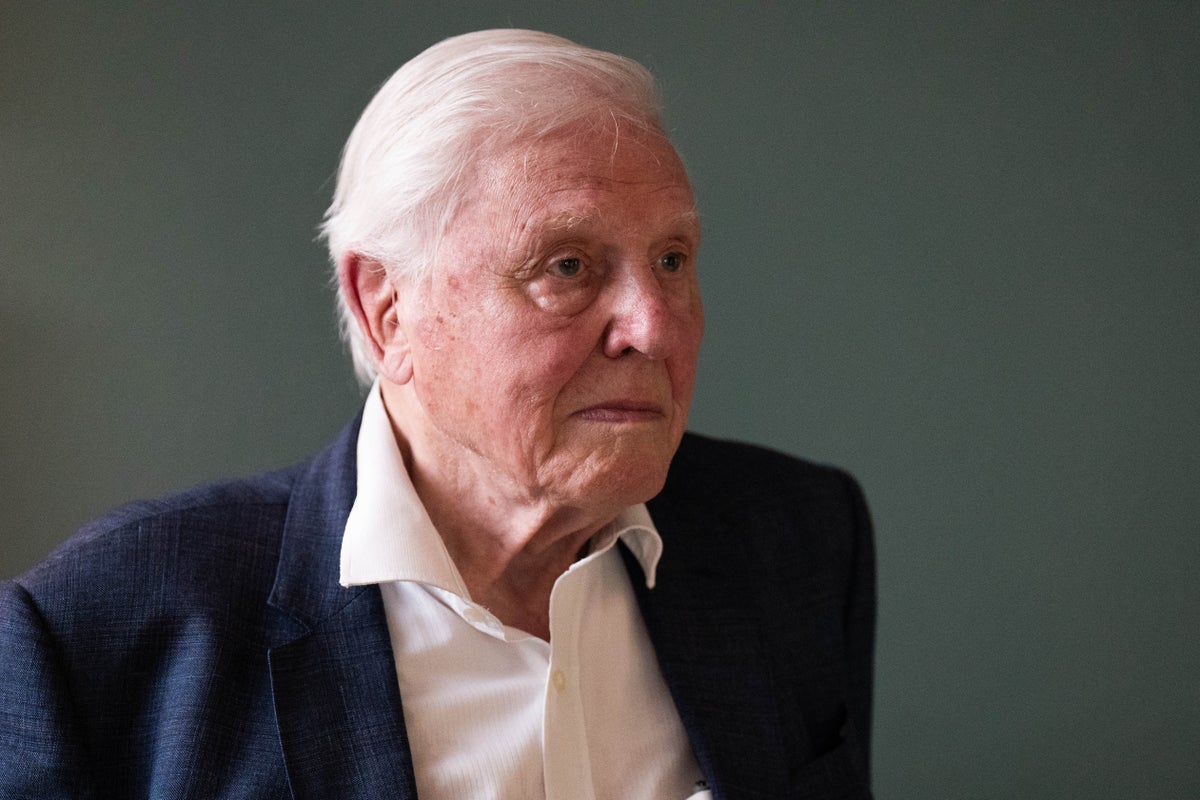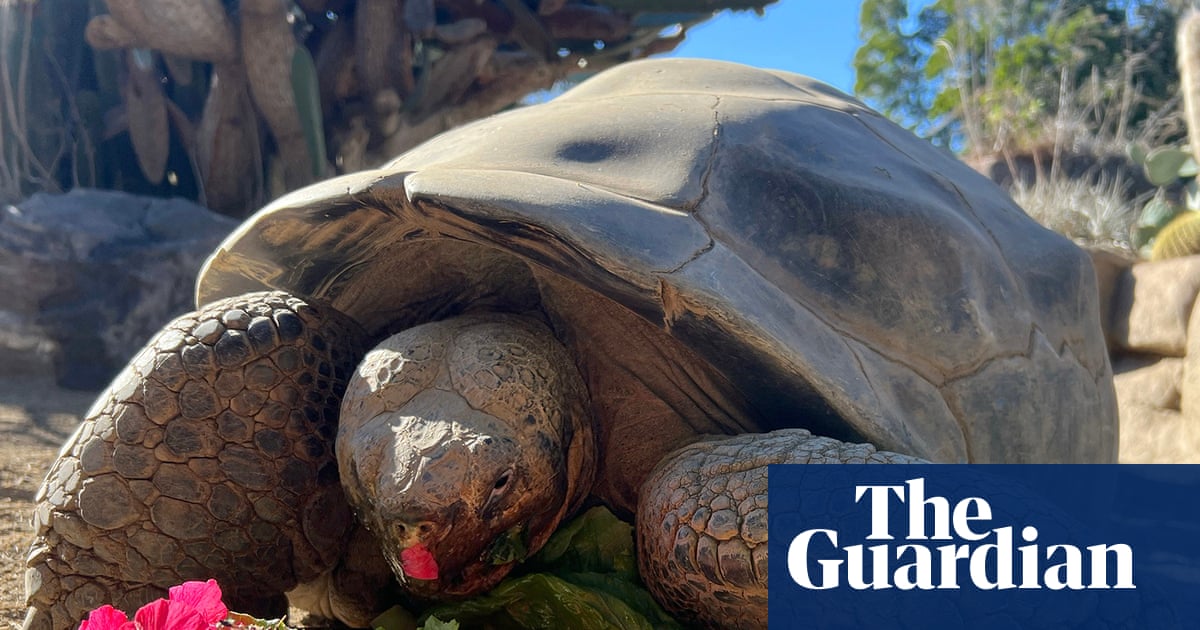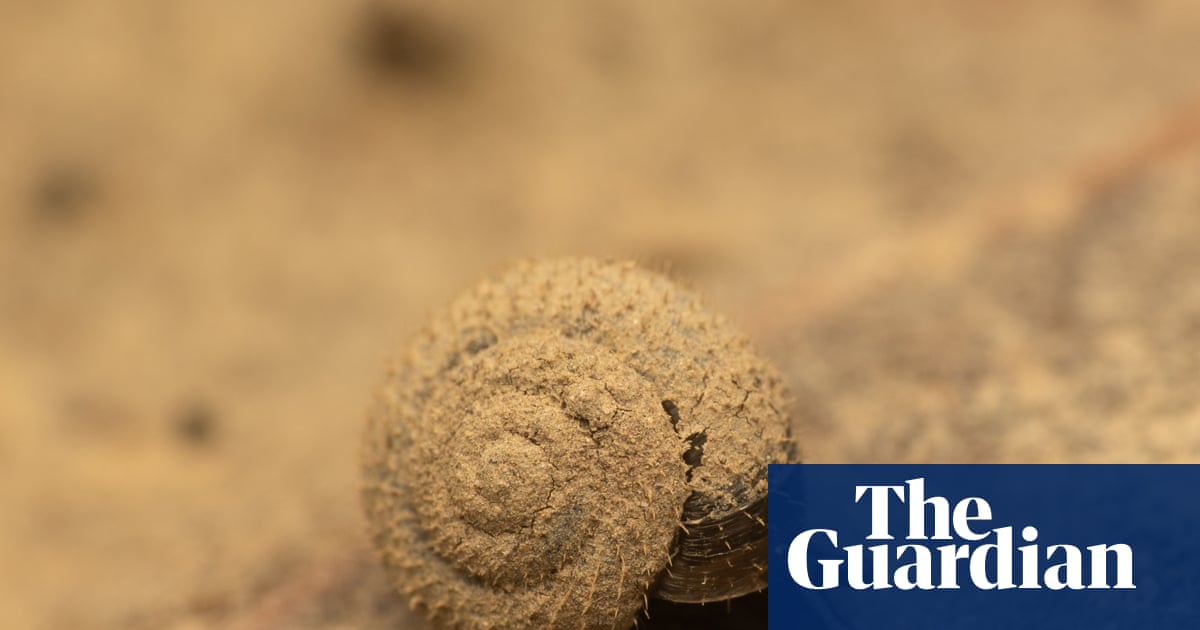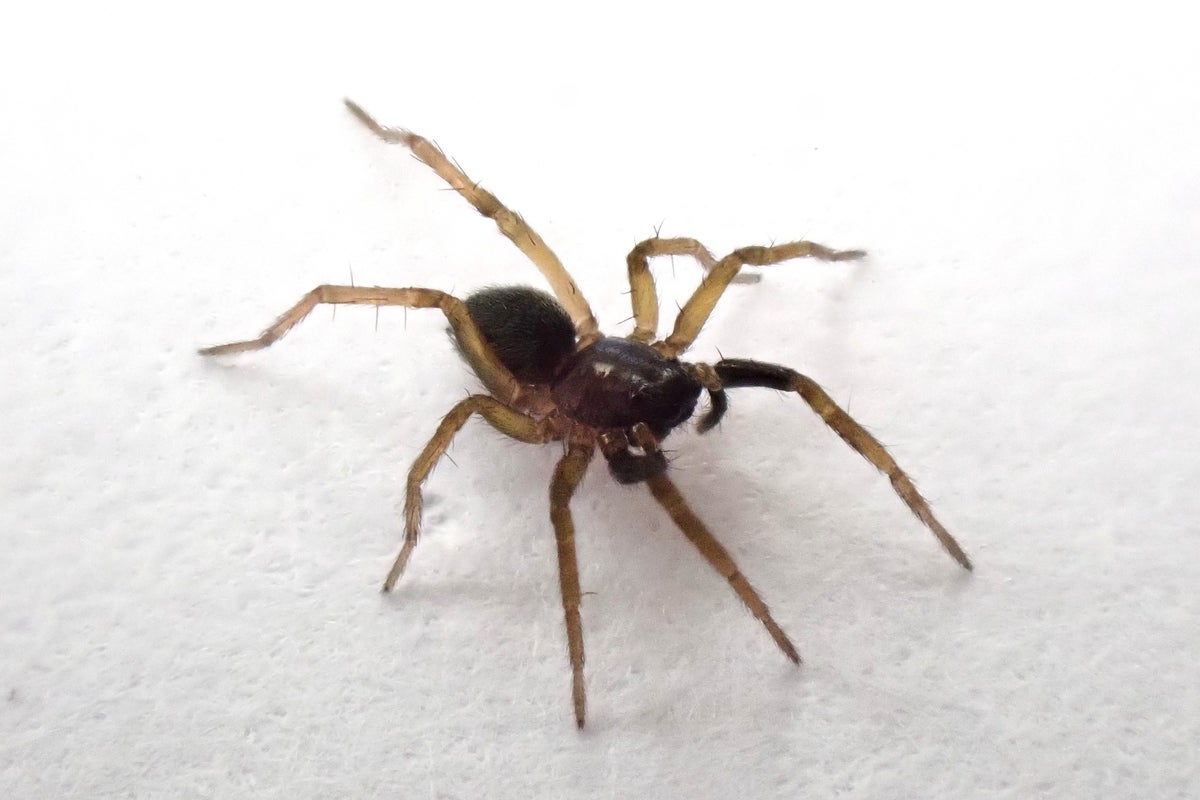#conservation
#conservation
[ follow ]
#wildlife-photography #wildlife #journalism-funding #archaeology #climate-change #new-zealand #journalism
fromwww.theguardian.com
1 day agoChanges to polar bear DNA could help them adapt to global heating, study finds
Now scientists at the University of East Anglia have found that some genes related to heat stress, ageing and metabolism are behaving differently in polar bears living in south-east Greenland, suggesting they may be adjusting to warmer conditions. The researchers analysed blood samples taken from polar bears in two regions of Greenland and compared jumping genes: small, mobile pieces of the genome that can influence how other genes work. Scientists looked at the genes in relation to temperatures in the two regions and at the associated changes in gene expression.
Environment
fromABC7 San Francisco
2 days agoTiny tracker following monarch butterflies during California migration
SAN FRANCISCO (KGO) -- When this monarch butterfly hits the sky it won't be traveling alone. In fact, an energetic team of researchers will be following along with a revolutionary technology that's already unlocking secrets that could help the entire species survive. "I've described this technology as a spaceship compared to the wheel, like using a using a spaceship compared to the invention of the wheel. It's teaching us so, so much more," says Ray Moranz, Ph.D., a pollinator conservation specialist with the Xerces Society.
Science
fromwww.mediaite.com
2 days agoTrump Admin Sued To Remove President's Face From Park Passes
The Center for Biological Diversity filed a lawsuit today to prevent President Donald Trump from replacing a beautiful picture of Glacier National Park with a close-up of his own face on the America the Beautiful National Parks and Federal Recreational Lands Annual Pass, reads a press release. Kieran Suckling, executive director of the Center, blasted the president's image being used on passes as his crassest, most ego-driven action yet.
US politics
fromNew York Family
5 days agoImpact: The End of the Age of Dinosaurs now at AMNH - New York Family
66 million years ago, a giant asteroid hit the earth at a whopping 45,000 miles per hour and changed the course of life on our planet. Today, the American Museum of Natural History is telling the story in a fascinating and educational new exhibit called "Impact: The End of the Age of Dinosaurs." Impact transports visitors to a time before, during and after the catastrophic event occurred via interactive installments, immersive videos and realistic displays.
Science
Arts
fromThe Art Newspaper - International art news and events
1 week agoIn pictures: a sculptural celebration at Art Basel Miami Beach
Nora Lawrence highlights outdoor sculptures emphasizing materiality, surface texture, craftsmanship, plant interaction, and ongoing conservation needs for successful open-air display.
Environment
fromTravel + Leisure
1 week agoThis National Park Has a Vineyard, Long-distance Bike Trail, and 60-foot Waterfall-and It's Not Where You'd Expect
Cuyahoga Valley National Park is a nearby, free urban oasis with restored ecosystems, abundant wildlife, and extensive trails ideal for hiking, biking, and running.
fromianVisits
1 week agoBritish Museum is promising 'Good Vibrations' for the Bayeux Tapestry's trip to the London
When the Bayeux Tapestry makes its historic visit to the UK next year, it will need to travel in a container that is exceptionally resistant to vibrations. That's one of the conditions applied to the transfer, which the government has just revealed, ensuring that the precious tapestry does not experience more than 2 millimetres of vibration per second on its trip to London.
UK news
Environment
fromHigh Country News
1 week agoNational parks aren't just for tourists. They're an essential home for wildlife. - High Country News
Yosemite's diverse wildlife are intimate and beautiful yet threatened, and nurturing appreciation through storytelling can motivate protecting their habitats.
Arts
fromThe Art Newspaper - International art news and events
1 week agoEcological fables set in the Everglades: Kat Lyons stages first US institutional solo show at Marquez Art Projects
Large-scale oil paintings depict Everglades wildlife and ecological tensions, blending natural history, folklore, conservation, and memory to explore native and invasive species and landscape resilience.
fromwww.theguardian.com
1 week agoNational Trust launches fundraiser to help buy land around Cerne Giant
The mystery of when, how and perhaps most importantly why a giant naked figure was carved into a dizzyingly steep hillside in the English West Country has been a source of wonder and intrigue for centuries. Future generations may come closer to solving the puzzle of the Cerne Giant after the National Trust stepped in to buy 340 acres of land around the 55-metre (180ft) figure. The planned purchase is expected to clear the way for more archaeological investigations around Britain's largest chalk hill figure, which looms over the rolling Dorset landscape.
History
Arts
fromThe Art Newspaper - International art news and events
1 week agoTravel back in time on an immersive journey through Italy's rich mosaics at Miami's Frost Art Museum
Restored Roman mosaics and 11th-century Italian stone slabs, including fragments from Caligula's ship, are exhibited in Miami with digital representations.
fromFortune
1 week agoThe eel wars: Japan and America fight tooth and nail against new protections as some freshwater populations plunge over 90% from the 1980s | Fortune
Eels are the stuff of nightmares - slimy, snakelike creatures that lay millions of eggs before dying so their offspring can return home to rivers and streams. They've existed since the time of the dinosaurs, and some species are more poorly understood than those ancient animals. Yet they're also valuable seafood fish that are declining all over the world, leading to a new push for restrictions on trade to help stave off extinction.
Environment
fromThe Art Newspaper - International art news and events
2 weeks agoExposed to the elements, public-and geese: the complex conservation of outdoor art
Outdoor art can become a crucial element of a place's identity, but long-term and permanent pieces face particularly complex conservation issues. As these works weather the elements-which can include intended and unintended public interaction-they are subjected to damage and decay, leaving those in charge of their care with the difficult and costly task of ongoing maintenance. But who exactly is responsible can be complicated, leading to disrepair, litigation and even the eventual removal of works.
Arts
fromMail Online
3 weeks agoBiologist SOBS as he finds one of the world's rarest flowers
A biologist has shared the heartwarming moment he found one of the rarest flowers in the world, breaking down in tears over the discovery. Dr Chris Thorogood, associate professor of biology at the University of Oxford, had trekked day and night through the jungle to hunt for the incredibly rare Rafflesia hasseltii. These elusive plants only grow in the tiger-patrolled jungles of West Sumatra, Indonesia and bloom for only a few days.
Science
Photography
fromDesign You Trust - Design Daily Since 2007
3 weeks agoBeautiful Winning Photos from the 2025 Nature inFocus Photography Awards
Sixteen winning nature photographs showcase predator portraits, conservation stories, and surreal scenes that highlight survival, connection, technical diversity, and the need to protect biodiversity.
Environment
fromDesign You Trust - Design Daily Since 2007
3 weeks agoSpectacular Winning Images from the 2025 Nature Conservancy Oceania Photo Contest
A photo contest captured Oceania's natural and cultural beauty, awarding Miesa Grobbelaar’s "Tauhi" for a rescue moment between human and humpback whale.
fromwww.theguardian.com
3 weeks agoThere are many zoos I would like to see closed': Zoo chief plans shake up
He's taken up the mantle of keeping the world's zoos in check at an interesting time, when their role in modern society is the subject of heated debate, with rows about lonely gorillas or penguins kept in a basement seem to erupt every week. Keeping wild animals solely for entertainment purposes was socially acceptable some decades ago, but there are now far more concerns for their welfare and the conservation objectives of their captivity. This particularly applies to animals such as elephants, which need large spaces to roam and in the wild have complex relationships within giant social groups.
Environment
Snowboarding
fromSnowBrains
3 weeks agoNew Brighton, UT, Land Ordinance Expands Local Voice Over Ski Resort Growth in Upper Big Cottonwood Canyon - SnowBrains
Ordinance OAM2025-001431 restricts ski-resort expansion and commercial development to mapped boundaries in upper Big Cottonwood Canyon, strengthening community control and ecosystem protection.
fromwww.aljazeera.com
3 weeks agoActivists want to protect brazilwood. Why are musicians worried?
Some people just use one bow their whole life, said Baker said from his home in the United Kingdom. The bow is really their voice. The violin, you just have a string, and you put your fingers down. But the way the sound comes out all comes from the bow.
Environment
Environment
fromABC7 Los Angeles
3 weeks agoTake a look: National Geographic reveals its 2025 Pictures of the Year
Twenty-five powerful images capture environmental urgency, endangered wildlife, climate-driven range shifts, scientific discoveries, and human resilience, urging preservation and hope for a better future.
Environment
fromTravel + Leisure
3 weeks agoI Went Off-grid in Argentina's Rain Forest-Here's What I Learned From the Guarani and Their Sacred Mate
Yacutinga Lodge offers immersive stays in Argentina's threatened Atlantic Forest, combining Indigenous mate ceremonies, regional cuisine, Gaudí-inspired eco-design, and conservation on a private reserve.
Environment
fromWashingtonian - The website that Washington lives by.
1 month agoThe Potomac River Still Isn't Safe to Swim In: Report - Washingtonian
The Potomac River's health has stalled at a 'B' grade despite improvements; pollution, extreme weather, and weakened protections threaten continued progress.
fromFuncheap
1 month agoNew Year's Day at Oakland Zoo's "Glowfari" 2025 Lights Festival
This wildly popular, family-friendly experience features hundreds of ALL new, larger-than-life animal lanterns throughout the Zoo. Each lantern tells the story of the ongoing journey of wildlife, the importance of every species on our planet, and Oakland Zoo's commitment to conservation. This year's experience includes new themes - explore the future of Oakland, learn about coexisting with wildlife, swim through the reef to see colorful underwater creatures, go on a safari through the savanna to spot iconic African animals,
Environment
Miscellaneous
fromThe Art Newspaper - International art news and events
1 month agoBelgium's famous Menin Gate memorial to host first Armistice Day ceremony since 6m restoration
Menin Gate, a memorial bearing more than 54,000 names of missing First World War soldiers, was restored to address water ingress and conserve the structure.
fromTravel + Leisure
1 month agoThis Country Has Some of the Darkest Skies in the World-These Are the 10 Best Places to Stargaze There
As cities sprawl ever outwards, they bring their big lights with them, and the once-dark night skies overhead are being lost. But in New Zealand, thanks to its low population density, the skies have remained surprisingly dark, and over 96 percent of its landmass still has views of the Milky Way at night. DarkSky International, a nonprofit organization dedicated to preserving and protecting the night sky, has identified some of the best spots for witnessing the wonders of the cosmos across the island country.
Science
Travel
fromTravel + Leisure
1 month agoThis Is One of the Most Underrated National Parks in the U.S.-and It Has Badlands, Wild Horses, and Presidential History
Theodore Roosevelt National Park preserves the Badlands that inspired Roosevelt’s conservation legacy, offering wide-open skies, wildlife, minimal crowds, and accessible year-round visitation with modest fees.
fromTravel + Leisure
1 month agoThis Remote Brazilian Island Is About to Become the Next Big Travel Destination-Here's Why
For years, limited flights, visitor caps, and steep environmental fees kept Fernando de Noronha notoriously difficult to access, especially for international travelers. This kept the remote Brazilian archipelago wild and rugged, its volcanic cliffs and crystalline waters luring mostly domestic travelers in search of Brazil's most pristine beaches. But now a new direct LATAM flight from São Paulo, Brazil's main travel hub, makes it easier for foreign visitors to fly in.
Travel
fromFuncheap
1 month agoDiscover Bay Area Butterflies w/ Local Author (SF)
Following an HIV diagnosis in 2000, thespian-turned-lepidopterist Liam O'Brien leaned into his passion for butterflies as a source of wonder. After decades of observing, counting, and (responsibly) capturing these scaled winged beauties, he became an ambassador for the species. In his debut book Butterflies of the Bay Area and (Slightly) Beyond: An Illustrated Guide, O'Brien chronicles 135 varieties of butterfly with vim and vivid hand-painted illustrations to introduce readers to the breadth and beauty of butterfly biodiversity of this region.
Books
Science
fromFast Company
1 month ago'De-extinction' startup Colossal Biosciences makes its first acquisition: a company that clones pets
Colossal Biosciences acquired ViaGen Pets and Equine, increasing cloning capacity and access to Roslin Institute technologies for de-extinction and endangered species conservation.
Women
fromTravel + Leisure
1 month agoI Host Women's Empowerment Retreats Across Africa-Here's How Growing Up in Zimbabwe Inspired Me
Women's empowerment retreats in African safari settings foster presence, collaboration, and measurable improvements in maternal health, education, and wildlife conservation.
World news
fromTravel + Leisure
1 month agoHow to See Brazil off the Beaten Path, According to a Top Travel Advisor
Seek lesser-known Brazilian destinations like Ibiti and Fernando de Noronha for conservation-centered nature immersion, solitude, and exceptional terrestrial and marine wildlife experiences.
Fundraising
fromNon Profit News | Nonprofit Quarterly
1 month agoPhilanthropy Should Support Frontline Leadership in Times of Crisis - Non Profit News | Nonprofit Quarterly
Flexible, long-term, trust-based philanthropic funding that values unquantified social resilience, learning, and local agency better supports frontline conservation and climate-justice efforts.
fromSFGATE
1 month agoWe've been waiting a century for this 'love letter' to Yosemite wildlife
Yosemite National Park is famous for its towering granite, thundering waterfalls and world-class hiking trails. The stunning heart of the park, Yosemite Valley, is extremely popular and almost always filled with humans - and perhaps that's why the park's wildlife tends to fly under the radar. In fact, not a single book in the past 100 years has been solely dedicated to the creatures of Yosemite.
Environment
fromKqed
1 month agoUC Davis Researchers Discover New Species of Coastal Spider, Just in Time for Halloween | KQED
We knew that these lineages across the coast of California were really different from each other and had been separated for a very long time," said Jochim, a researcher in the Department of Entomology and Nematology at UC Davis. The spiders pose no risk to humans, Jochim said. Though our activities can pose a risk to them. "These spiders are not scary," she said. "They mind their own business and [generally] stay in their burrows ... They live in a really important and fragile ecosystem - the coastal dunes of California. So, it's really important to protect their habitat.
Science
fromSFGATE
1 month agoNew spooky species discovered in California's sand dunes
The brown arachnids are the size of a quarter. "While there are over 50,000 species of spiders worldwide, there are probably hundreds of thousands left to be discovered, even along the coast where new spider species may be hiding just underfoot of California beachgoers," Jason Bond, a professor in the UC Davis Department of Entomology and Nematology and the study's senior author, said in a statement.
Science
fromwww.eastbaytimes.com
1 month agoIn brief: East Bay parks officials praise law authored by Concord's Grayson
The East Bay Regional Park District applauds Gov. Gavin Newsom's recent signing into law of Senate Bill 392, landmark legislation that strengthens conservation efforts and enhances climate resilience across the East Bay, as well as other areas throughout the state. SB 392, authored by state Sen. Tim Grayson, D-Concord, and passed unanimously by the state Legislature, establishes the East Bay Hills Conservation Program, empowering the East Bay Regional Park District (EBRPD) to better protect the ecological integrity of the East Bay hills while improving wildfire
Environment
World news
fromwww.independent.co.uk
1 month agoChina's rare golden monkeys debut at European zoos, a possible successor to 'panda diplomacy'
China has loaned endangered golden snub-nosed monkeys to European zoos for ten years, prompting conservation collaboration and welfare concerns over animal diplomacy.
fromwww.theguardian.com
1 month agoLong time, no sea: more than 100m red crabs migrate on Christmas Island, delighting conservationists
More than 100 million red crabs making their annual trek from Christmas Island's rainforest to the coast are creating a migration spectacle that occupies countless bucket lists. Their dominance of the landscape is an eye-catching phenomenon loved by tourists and treasured by residents. For the island's conservationists, it's a reassuring sight. The annual migration creates plenty of work for park rangers, who use rakes to keep them clear of the busiest roads.
Environment
fromDesign You Trust - Design Daily Since 2007
1 month agoHilarious Finalist Images from the 2025 Comedy Wildlife Photography Awards
The Nikon 2025 Comedy Wildlife Photography Awards have unveiled their finalists, and the results are hilariously delightful. With 40 uproarious images, 3 curated portfolios, and 10 laugh-out-loud videos, this year's entries showcase nature's unexpected comedic flair. From expressive lions to penguins mid-blunder, the contest celebrates the quirky charm of animals while highlighting the skill and timing of wildlife photographers. Beyond the laughs, the awards carry a meaningful message about conservation and the importance of protecting these fascinating creatures.
Photography
fromwww.theguardian.com
1 month agoAncient elephant migration routes are being blocked off can anything stop the rising death toll?
At nearly 3.5-metres tall and weighing as much as a bus, you could be forgiven for assuming that Goshi one of an estimated 30 super-tusker elephants left in Africa would be easy to find. The radio tracker picking up his signal beeps encouragingly, indicating the giant bull is within 200 metres. But the dry season has turned the mass of arid acacia scrubland grey, and everything seems to resemble an elephant. Even when they are invisible, the huge herbivores shape the landscape here.
Environment
fromHigh Country News
1 month agoSen. Mike Lee's new bill permits 'tactical infrastructure' in wilderness areas - High Country News
In June, when Utah Republican Sen. Mike Lee moved to force a sell-off of up to 3.2 million acres of public land, he insisted he was solely interested in combatting America's housing crunch and that the bill only targeted "unused, garden-variety" federal parcels - not national parks, wilderness areas and other "crown jewel" lands. Few bought what Lee was trying to sell.
US politics
fromThe Mercury News
1 month agoOpinion: Jane Goodall's advocacy for animals included a vegan diet
The more we learn of the true nature of nonhuman animals, especially those with complex brains and corresponding complex social behavior, the more ethical concerns are raised regarding their use in the service of man-whether this be in entertainment, as 'pets,' for food, in research laboratories, or any of the other uses to which we subject them.
Environment
[ Load more ]



